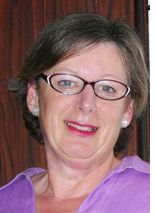By Judy Lash Balint

JERUSALEM — I’ve never been in Tel Aviv or Haifa for Tisha B’Av, but my guess is that it probably doesn’t feel too much different than Tisha B’Av in Seattle–a few hardy souls sitting on the floor of their synagogues in the evening and then spending the day itself struggling to keep awake through some talks and appropriate films, while the rest of the city goes about its usual business oblivious to the significance of the day.
That’s not how Tisha B’Av is observed in Jerusalem–the focal point of much of the mourning. Here,as restaurants and places of entertainment close down, thousands take to the streets leading to the Old City and the remnants of the Temple. New traditions mingle with the ancient as Israelis commemorate the tragedies that have befallen the Jewish people on and around the 9th of Av.
In recent years, much like Tikun Layl Shavuot, the all-nighter of learning that marks the eve of the Shavuot holiday, Tisha B’Av has turned into an opportunity for dialogue and reflection on the rifts that continue to tear at the seams of our peoplehood.
For the first time in many years I chose to forego the traditional walk around the walls of the Old City in favor of a new initiative organized by the Jerusalem Challenge. Oblivious to the fact that this was a group targeting 20 & 30-somethings, I found myself quite possibly the oldest participant in another meaningful observance of Tisha B’Av opposite the Old City walls.
The Challenge folks chose to hold their megilla reading and panel discussions in the courtyard of one of Jerusalem’s staunchly secular institutions–the Cinematheque, which was one of the first places in Jerusalem to stay open on Shabbat.
After having spent most of the last 10 days running in and out of the Cinematheque to catch films at the Jerusalem Film Festival, it was a little strange to be sitting on the ground in the forecourt listening to the mournful tones of the prophet Jeremiah’s lament over Jerusalem. [Click here for video}
After the reading, English-speakers went off to listen to a panel that included Jewlicious blog founder, David Abitbol; Amotz Asa-El of the Jerusalem Post and Aharon Horowitz, Co-Director of Presentense. I stayed outside to catch the Hebrew panel that included a Modern Orthodox professor, Moshe Meir; a black-hat rabbi, Eliyahu Linker; an Ethiopian woman who works in immigrant absorption and Dr Ilan Ezrahi, a secular educator and former head of the MASA program.
Against the dramatic backdrop of Mt Zion and the Jerusalem walls and overlooking the Gehinom Valley, the discussion was fairly predictable, but interesting, nevertheless. Dr. Ezrahi recounted how he was completely unaware of Tisha B’Av as he was growing up, and only learned about the day while serving as a staff member at an American summer camp.
For Moshe Meir, whose father had fought and died fighting for the liberation of Jerusalem in the Six Day War, the day has a different significance.
Following the panel, groups set out for walking tours of the Old City, joining the throngs that swarmed the Kotel plaza all night long.
Meanwhile, at the tent set up by the family of kidnapped soldier Gilad Shalit in front of the prime minister’s residence in Rehavia, Chief Rabbi Yona Metzger read Lamentations for Gilad’s parents, Noam and Aviva and dozens of others who came to show solidarity.
As I walked home through the quiet streets away from the Old City,along an uncharacteristically silent Emek Refaim, the street lights along a stretch of the Greek and German Colony were all dark. Had some city or electric company official flipped the switch to create the gloomy Tisha B’Av mood, or was it a fluke? In Jerusalem you never know.
*
Judy Lash Balint is a freelance writer and blogger on the to Jerusalem Diaries:In Tense Times website